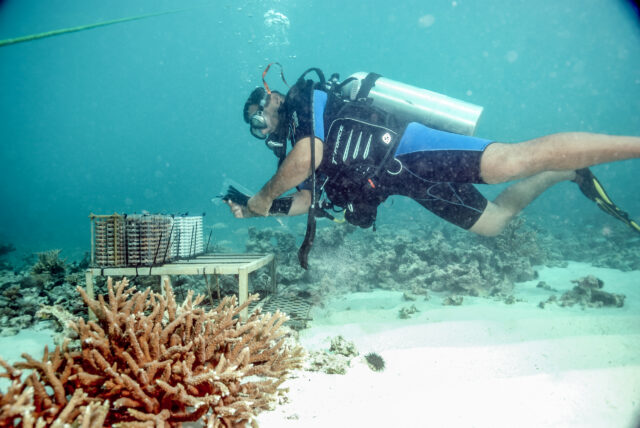It’s no secret that we are in a health emergency that long pre-dates the current pandemic and directly affects 20 percent of the population: diabetes.
With an equal number of pre-diabetics in the UAE, upwards of 40 percent of the UAE population either has, or is at risk of developing, diabetes. And that number is only set to grow. Despite its prevalence, diabetes is largely misunderstood, even by the majority of those who have the condition. It is a life-changing diagnosis and one that requires 24/7 vigilance and compliance to a care plan to ensure full health.

How diabetes is different in children
As complicated and overwhelming as the condition can be for adults, imagine the impact of a childhood diagnosis. As children grow, learn and mature, a diabetes diagnosis has implications for every facet of their life, including their physical and mental well-being and social development. The good news, however, is that the field of medicine, assisted by technology, has never been better equipped to help not only children, but their entire families, to thrive.
Before I outline the ways in which childhood diabetes can be successfully managed, it’s important to provide a little more information about diabetes in children. Firstly, diabetes is a condition whereby the body does not make enough, or cannot use, insulin, the hormone that helps convert the sugar in our food to energy. Left untreated or poorly treated, sugar in the blood can build up and cause a range of serious health complications including heart disease, blindness, kidney failure, lower-extremity amputations and even death.
Type 1 vs Type 2
The majority of young people diagnosed with the condition have Type 1 diabetes, which means their bodies do not produce insulin at all. Type 1 diabetes is an autoimmune condition and while we do not know about all of the causes, genetics do play a role.
Type 2 diabetes is different in that it is a condition whereby the body has stopped producing insulin or does not use it effectively. While there are many causes that are not fully understood, a diet high in sugar and refined foods and lack of exercise can lead to pre-diabetes and eventually diabetes. While Type 2 usually develops later in life, alarmingly, we’re seeing more and more young people, teenagers and even children who are either pre-diabetic or already Type 2 diabetic.
Whatever the diabetes type, a diagnosis for a young person and their family is a life-altering development. A key to managing either form of diabetes is compliance to a care plan that involves ongoing measurement of blood glucose levels, diet, exercise, and sometimes self-administered insulin shots. While the condition may affect one child directly, the effects are felt in some way by the entire family. Pediatric diabetes patients face a number of challenges that adults do not, however.
The normal physiological growth process can affect various aspects of care plans, including insulin dosage. How children navigate the learning curve as they become more autonomous, the psychological effects of the diagnosis and ongoing care, a change in family dynamics and the challenges of care outside the home, including school, must also be taken into consideration.
The good news is that thanks to technology, the medical community has never been better placed to help young diabetics and their families.
Juvenile diabetes technology
Glucose monitoring
With a finger-prick blood glucose monitor (BGM), a person pricks their finger and then tests the strip to determine their blood glucose levels. Diabetics are required to do this numerous times a day to ensure that they stay in the right range and avoid their blood sugar going too low (hypoglycemic) or too high (hyperglycemic). While the technology has advanced from the early 1980s, young children need help with the process and most don’t like even small needles. These days continuous glucose monitors (CGMs) can be worn, measuring blood glucose levels in real time, sending the information via Bluetooth to a smart phone and sharing it with parents or caregivers via an app on their phones. Newer model CGMs don’t need to be calibrated and feature new customizable alerts and alarms, including one that can warn users up to 20 minutes in advance of an urgent hypoglycemic event, so that they or their caregivers can take steps to prevent it. CGMs are slimmer, more discreet and last longer than ever before, making them ideal for children and young people.
Insulin Pumps
While this is not for all young patients, wearable insulin pumps help deliver insulin in a way that resembles the body’s own release of insulin. They can give a child more flexibility and improve diabetes control. Combined with a CGM, a wearable insulin pump eliminates the need for daily shots.
New Models of Care
Despite all the technology that’s available, most young diabetics and their families will still experience more traditional models of care, whereby they will visit a doctor for regular appointments and then follow a prescribed care plan in between. This is changing. At GluCare, we use connected and wearable technology to monitor patients 24/7. This gives a full picture of our patients in between visits; we can analyze trends and assess what improvements can be made to their care plans. We are also able to make interventions to care plans in between visits and offer support via a proprietary app. This is an added layer of support for patients and their parents and one that we’re confident will become more common in the future.
Artificial Intelligence
In addition to wearable and connected technology, there is an emerging role for artificial intelligence in diabetes care. Using the abundance of data generated as a part of diabetes care, at Glucare machine learning can identify risk scores for patients for a number of diabetes-associated conditions, enabling us to make interventions to prevent the progression of any co-morbidities.
Connectedness
Finally, and certainly not least, technology through online groups has allowed young people with diabetes and their parents and families to easily seek support in one another, to share resources, information and just talk about both the medical and social issues that can come along with a juvenile diabetes diagnosis. This is invaluable for patients and their families to know that they are not alone.
Although life-altering, diabetes is manageable with proper care, support and through using technology in smart and efficient ways.
Dr Kowshik Gupta is a Pediatric Endocrinologist at GluCare Integrated Diabetes Center in Dubai






